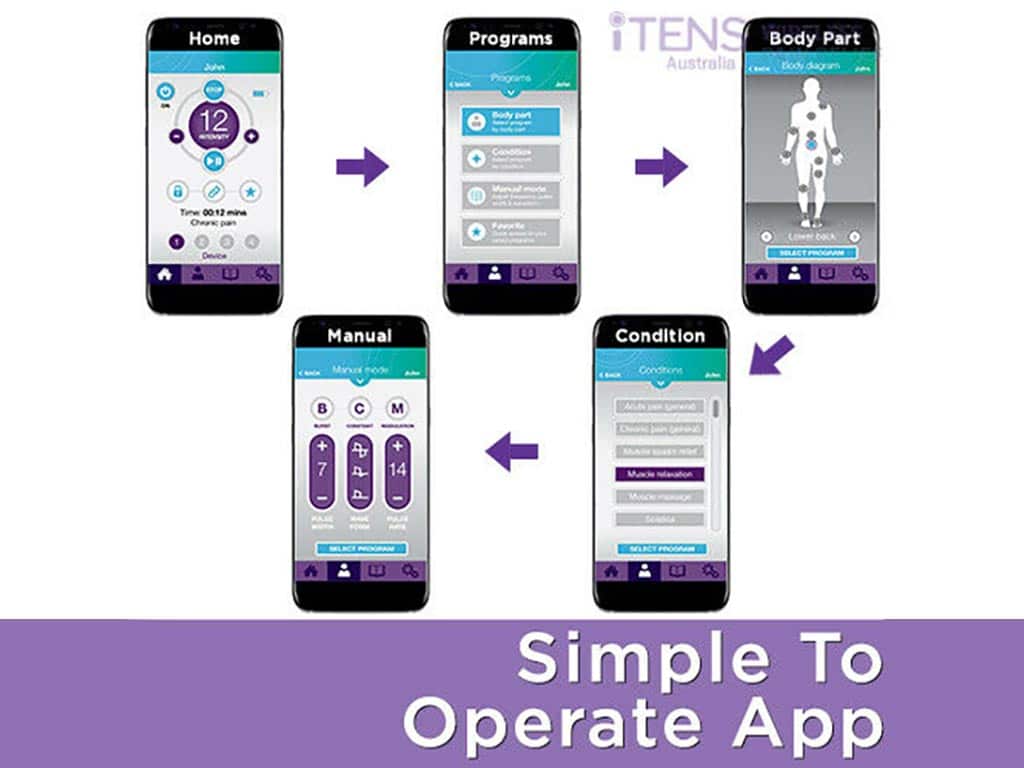
A Transcutaneous Electrical Nerve Stimulation or TENS machine for sciatic nerve pain is a device that provides relief. It sends electrical currents through electrode pads. Additionally, it works by blocking pain signals from reaching the brain. A TENS machine can also stimulate the release of endorphins, which are natural pain-relieving chemicals in the body. To operate the machine, simply place the electrode pads on clean and dry skin, turn on the unit, and adjust the settings.
Sciatic nerve pain, also known as sciatica, causes sharp pain, numbness, and tingling sensations. It occurs when the sciatic nerve gets compressed or irritated, running from the lower back to the feet. People suffering from this condition often seek ways to alleviate the discomfort and improve their quality of life. This article provides information on TENS units for sciatica, including how they work and how to use them correctly.
What is a TENS Machine for Sciatic Nerve?
A TENS machine for sciatic nerve pain is a device that helps relieve pain by delivering electrical currents through electrode pads. These mild electric currents target the sensory nerves in the treated area and reduce pain sensations. Many studies have shown that TENS therapy is effective in alleviating different types of acute and chronic pain conditions.
There are two main types of TENS devices: wired and wireless. Wired devices have electrode pads that are connected to the device using lead cables. Medical professionals often use these devices in clinical settings. On the other hand, wireless devices like iTENS offer the same pain relief benefits. These units are compact and portable.
Moreover, people can easily control these units through a smartphone app or manual controls. When using a TENS unit, people can program the settings according to their specific needs. This means they can adjust settings such as pulse frequency, pulse duration, and electrical pulse intensity. These adjustments allow for personalisation to effectively target specific pain areas and achieve the best treatment results.
Causes and Symptoms of Sciatic Nerve Pain
Causes:
- Herniated disc: when the rubbery cushion between the spine bones pushes out, it can press on the sciatic nerve.
- Spinal stenosis: narrowing of the spinal canal can put pressure on the sciatic nerve.
- Injury or trauma: a fall or car accident can cause damage to the sciatic nerve.
Symptoms:
- Sharp, shooting pain: a sudden, shooting pain that travels from the lower back to the legs.
- Numbness or tingling: numbness or a pins-and-needles sensation in the legs or feet.
- Weakness: muscles in the affected leg may feel weak and make it difficult to walk or stand.

How a TENS Machine for Sciatic Nerve Works
A TENS machine for sciatic nerve works by utilising the Pain Gate Control Theory. This theory suggests that the electrical currents from the TENS electrical device disrupt the pain signals that are sent to the brain. The machine achieves this by employing high-frequency electrical impulses, typically ranging from 50 to 150 Hz. This form of therapy proves especially beneficial for managing severe or acute pain.
Another aspect of TENS therapy involves its capacity to stimulate the release of endorphins. This occurs through the use of low-frequency electrical stimulation, typically in the range of 2 to 10 Hz. Endorphins are the natural pain-relieving chemicals in the body. This capability is especially helpful for people dealing with chronic pain, providing a longer-lasting solution.
A TENS machine also helps to relieve painful muscle spasms and reduce inflammation. Moreover, the electrical stimulation can help improve the muscles around the spine. This helps to minimise the risk of injury to the back from sudden impacts or accidents. Likewise, it benefits other conditions affecting the back, such as osteoarthritis and fibromyalgia.
Advantages of the Device Over Other Treatment Methods
The TENS device has advantages over other treatment methods for sciatic nerve pain. For instance, it is non-invasive. This means that people can experience pain relief without the need for surgery or other invasive procedures. In addition, the device is easy to apply in the pain area without affecting vital organs.
Moreover, TENS is drug-free, unlike some other treatment methods which may involve medication. It does not involve chemical interactions that can cause medication side effects, making it a safer and more natural option. Furthermore, the TENS machine is customisable according to individual pain levels.

How to Operate a TENS Machine for Sciatic Nerve
Operating a TENS machine for sciatic nerve pain is simple. To begin, place the electrode pads on the clean, dry skin of the painful area and turn on the unit. Adjust the pulse rate, frequency, and duration settings as needed. Start the intensity at the lowest level and gradually increase it as the treatment progresses.
For best results, the ideal treatment session for sciatic nerve pain should be 30 to 45 minutes long. This allows the machine enough time to stimulate endorphin production and provide long-lasting relief. After the session, remember to turn off the machine and carefully remove the pads.
Advanced TENS machines may have a pre-set mode specifically for sciatic pain relief. This mode is designed to optimise the treatment of nerve pain, making it easier for users to select the appropriate settings for their needs. By utilising the pre-set mode, users can start the treatment with the press of a button, making it even simpler to operate the TENS device for sciatic nerve pain relief.
Proper Pad Placement
Proper pad placement is very important to effectively relieve sciatic nerve pain. When using TENS, the electrodes should be on the area where the pain is most intense. Typically, for symptoms originating in the lower back, the pads should be on either side of the spinal cord.
An alternative placement for the electrode patches is at the back of the legs. This placement is suitable for pain that extends from the buttock, legs, and knee. However, people must avoid placing the electrodes directly on the spinal column or on skin that is red, irritated, infected, or has open wounds.
Conclusion
In summary, a TENS machine for sciatic nerve pain is a valuable tool in managing and relieving pain. By delivering electrical currents through electrode pads, it targets the sensory nerves in the affected area, reducing pain sensations. The machine works by disrupting pain signals sent to the brain and stimulating the release of endorphins. It also helps relieve muscle spasms, reduce inflammation, and improve the muscles around the spine.
Operating a TENS unit for sciatica is a straightforward process. It involves placing the electrode pads on the affected area, adjusting the settings, and gradually increasing the intensity. The recommended treatment session lasts for 30 to 45 minutes. Moreover, proper pad placement is crucial, either on the lower back or at the back of the legs. However, it is important to avoid placing the electrodes directly on the spinal column or on irritated or infected skin.







